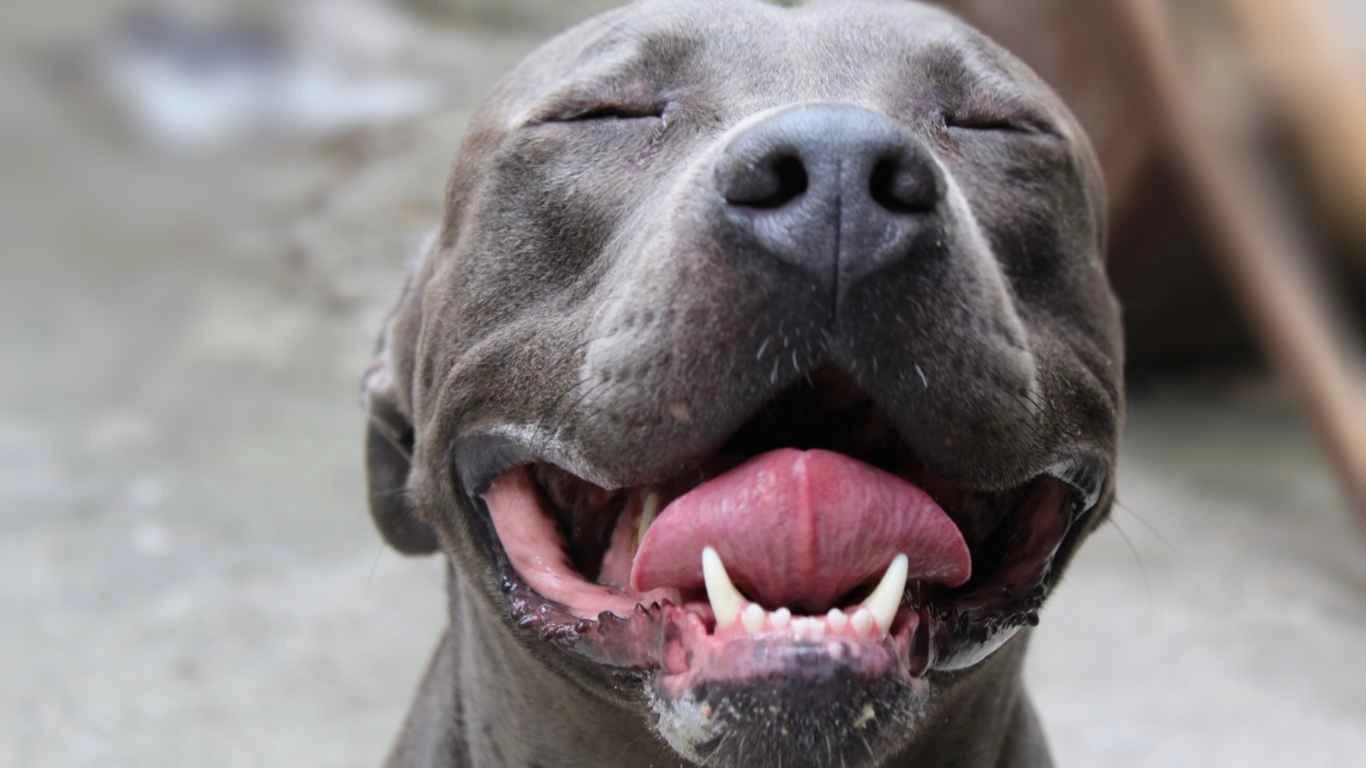The Best Diet for Dogs with Skin Infections: 5 Essential Tips for Healing
If you’re a pet parent dealing with a dog that has a history of skin infections, you know how challenging it can be to find the right solutions. Not only do these infections cause discomfort for your pup, but they can also lead to recurring issues that can be frustrating and concerning. That’s why it’s crucial to address the root causes of these infections, and one of the most effective ways to help your dog is through proper nutrition. In this article, we’ll dive into the best diet for dogs with a history of skin infections, sharing tips from my personal experience as an Animal Care Specialist. After all, feeding your dog the right food can make a world of difference in managing their skin health and overall well-being.
Understanding Skin Infections in Dogs

Before we talk about the best diet, let’s take a moment to understand why skin infections are so common in dogs. Skin infections in dogs are often a result of an overgrowth of bacteria or yeast on the skin, which leads to itching, redness, and discomfort. These infections can be triggered by a variety of factors, including allergies, parasites, or even an imbalance in the immune system. If your dog has had frequent skin infections, it could be an indication that something in their body—such as their diet—needs a little adjustment.
As an Animal Care Specialist, I’ve seen time and again how important it is to address not just the symptoms of skin infections, but the underlying causes. Whether it’s a food allergy, a sensitivity to certain ingredients, or a deficiency in key nutrients, proper nutrition plays a significant role in supporting your dog’s immune system and skin health. So, what exactly should you feed your dog to prevent and manage skin infections? Let’s dive into that now.
Key Nutrients for Healthy Skin

Omega-3 Fatty Acids
One of the best ingredients to look for in your dog’s diet when dealing with skin infections is Omega-3 fatty acids. These healthy fats are renowned for their anti-inflammatory properties and can help to soothe irritated skin, reduce itching, and promote a shiny, healthy coat. Omega-3s also support your dog’s overall immune function, which is essential for warding off infections in the first place.
If you’re not sure where to find Omega-3s, you can look for fish oils (like salmon oil) or plant-based options like flaxseed. These can either be added to your dog’s meals directly or found in high-quality commercial dog foods designed for skin health.
Probiotics and Digestive Health
Did you know that your dog’s gut health is directly linked to their skin health? A balanced gut microbiome can help prevent skin issues, as a strong immune system is essential for fighting off infections. Probiotics are beneficial bacteria that support your dog’s digestion and immune system. When the gut is in balance, it can help prevent the overgrowth of harmful bacteria or yeast that might lead to skin infections.
Many dog foods now include probiotics as part of their formula, or you can add probiotic supplements to your dog’s diet. Look for strains like Lactobacillus and Bifidobacterium, which are commonly used in pet probiotics.
Antioxidants for Skin Repair
Another important component of a diet aimed at preventing skin infections is antioxidants. These powerful compounds help to neutralize free radicals and reduce inflammation in the body, which can be beneficial for dogs suffering from skin irritation or infections. Ingredients like vitamin E, vitamin C, and beta-carotene are great sources of antioxidants.
Incorporating antioxidant-rich foods into your dog’s diet, such as sweet potatoes, carrots, or blueberries, can give their immune system a much-needed boost. You’ll not only be helping to manage their skin health but also supporting their overall vitality.
The Role of Protein in Skin Health

High-Quality Protein Sources
When it comes to building and repairing the skin and coat, protein is an essential building block. Dogs need high-quality protein to maintain healthy skin cells and tissue repair. If your dog has skin issues, they may have a sensitivity to certain proteins, which could be contributing to their problems.
For dogs with a history of skin infections, it’s often best to go for a limited-ingredient diet with a high-quality, easily digestible protein source. Novel proteins like duck, venison, or fish are good options for dogs with food sensitivities, as they are less likely to cause allergic reactions compared to more common proteins like chicken or beef. Additionally, the amino acids found in these proteins help support skin repair and regeneration.
Grain-Free vs. Grain-Inclusive Diets
Another consideration when choosing the best diet for dogs with skin issues is whether to go for a grain-free or grain-inclusive diet. Some dogs with skin infections may have sensitivities to grains like wheat, corn, or soy. If this sounds like your dog, you might want to opt for a grain-free formula. These diets typically use sweet potatoes, peas, or lentils as carbohydrate sources instead of grains, which can be gentler on your dog’s digestive system.
That being said, not all dogs need a grain-free diet. Some dogs do just fine with grains, and they can provide important fiber for healthy digestion. If you’re unsure about what’s best for your dog, it’s always a good idea to consult your vet or a canine nutritionist.
How to Choose the Right Dog Food
Now that we’ve covered the essential nutrients for your dog’s skin health, how do you go about choosing the right food? It’s all about reading labels and making informed choices based on your dog’s specific needs. I always recommend consulting with your vet before making any significant changes to your dog’s diet, especially if they have a history of skin infections or allergies.
When selecting a food, look for one that lists high-quality protein sources, healthy fats (like Omega-3s), and a balanced blend of vitamins and minerals. If your dog has food sensitivities or allergies, choose a food that is specifically designed for dogs with those needs.
Additionally, make sure to avoid fillers like corn, soy, and artificial additives, which can trigger allergic reactions or skin flare-ups in some dogs. Opt for natural, wholesome ingredients that support your dog’s skin health.
By now, you should have a better understanding of how to support your dog’s skin health through diet. But remember, nutrition is just one piece of the puzzle. Stay tuned for the next section, where we’ll dive deeper into specific diet recommendations and tips to help your dog thrive and keep those skin infections at bay!
Best Dog Food Options for Skin Health

Now that we’ve talked about the key nutrients that can help your dog’s skin stay healthy, let’s get into the meat of it: what are the best dog food options for dogs with a history of skin infections? I get asked this a lot in my role as an Animal Care Specialist. And while there’s no one-size-fits-all answer (because every dog is unique), I’ve gathered some general guidelines based on my experience working with dogs in pet clinics and shelters.
Limited Ingredient Diets
If your dog has a history of skin infections or allergies, a limited ingredient diet (LID) can be a great starting point. These diets focus on a small number of ingredients, usually one protein and one carbohydrate, which reduces the likelihood of triggering an allergic reaction. LIDs can help you pinpoint what your dog might be reacting to in their regular food.
For example, many dogs with skin issues are sensitive to common protein sources like chicken or beef. In this case, a limited ingredient diet with a novel protein (like venison or lamb) may work wonders. It can help reduce the inflammation that leads to skin flare-ups and support the healing process. Plus, these diets typically avoid artificial colors, flavors, and fillers, making them cleaner and easier for your dog to digest.
Novel Proteins and Grain-Free Options
As we mentioned earlier, certain proteins can trigger allergies or intolerances in dogs, and these sensitivities often manifest as skin infections. If you’ve noticed that your dog has recurring skin issues, you may want to try a novel protein like duck, venison, or even kangaroo. These proteins are less likely to have been part of your dog’s previous diet, meaning they’re less likely to cause an allergic reaction.
Along with novel proteins, many grain-free options are also available for dogs with skin sensitivities. Grain-free diets often replace grains like corn, soy, and wheat with sweet potatoes, peas, or lentils—ingredients that are less likely to irritate your dog’s digestive system. However, it’s important to note that not every dog needs a grain-free diet, and in some cases, grains like oats or barley might be perfectly fine, depending on your dog’s specific allergies.
Hypoallergenic Dog Foods
If you’ve been struggling with recurring skin infections, hypoallergenic dog foods may be worth considering. These diets are specifically designed to minimize the risk of allergic reactions. They often contain hydrolyzed proteins, which have been broken down into smaller parts that are less likely to trigger an immune response. This can be especially helpful if your dog has food sensitivities that contribute to their skin problems.
While hypoallergenic foods can be expensive, they’re often formulated with high-quality ingredients that can support your dog’s skin health in the long run. I’ve seen firsthand how these foods can help reduce itching and inflammation in dogs who have struggled with chronic skin issues.
Homemade Diets: Should You Try Them?

Homemade diets can be a bit of a gray area when it comes to managing skin infections in dogs. On one hand, they allow you to have complete control over what goes into your dog’s food, which is a huge advantage if your pup has food sensitivities. On the other hand, it can be challenging to ensure that your homemade meals are nutritionally balanced.
If you’re considering making homemade food for your dog, it’s crucial to work with a veterinarian or a pet nutritionist who can help you create a balanced, safe diet for your dog’s specific needs. When done correctly, a homemade diet can be a fantastic option for dogs with skin issues, but it requires careful planning. You’ll need to include the right mix of proteins, fats, vitamins, and minerals to ensure your dog’s immune system is supported, and that their skin stays healthy.
Some ingredients that work well in homemade dog food for skin health include:
- Lean meats like chicken, turkey, or fish
- Sweet potatoes for healthy carbohydrates
- Carrots and spinach for vitamins and antioxidants
- Fish oils for Omega-3 fatty acids
Supplementing Your Dog’s Diet for Skin Health

Sometimes, even the best dog food might need a little extra boost to keep your dog’s skin in top shape. That’s where supplements come in. Based on my experience, adding the right supplements to your dog’s diet can be an incredibly effective way to prevent skin infections and help with healing. Here are some of the most popular and helpful supplements for dogs dealing with skin issues:
Fish Oil
Fish oil is one of the most commonly recommended supplements for dogs with skin problems. It’s rich in Omega-3 fatty acids, which have anti-inflammatory properties that can help soothe itchy skin, reduce redness, and support overall skin health. Fish oil also promotes a shiny coat and can help to prevent hair loss due to skin infections.
When choosing a fish oil supplement, look for one that’s specifically made for dogs, as human supplements may contain additional ingredients that aren’t safe for pets. You can add fish oil to your dog’s food, or there are even soft chew options available if your dog isn’t a fan of the liquid.
Probiotics
As we discussed earlier, gut health is directly linked to skin health. Probiotics can help improve the balance of good bacteria in your dog’s digestive system, which in turn supports their immune system. By strengthening your dog’s immunity, probiotics can help fight off the infections that cause skin flare-ups. Adding probiotics to your dog’s diet is an easy way to support their skin health from the inside out.
Vitamin E and C
Both vitamin E and vitamin C are powerful antioxidants that can help reduce inflammation and promote skin healing. If your dog is suffering from chronic skin infections, these vitamins can support their immune system and assist in the repair of damaged skin cells.
These supplements are usually available in easy-to-administer chewable tablets or capsules. However, it’s always important to talk to your vet before starting any new supplement regimen, especially if your dog is already on medication or has other health concerns.
Now that we’ve covered some food options, supplements, and other diet considerations, you should have a solid foundation for choosing the right diet for your dog’s skin health. Of course, every dog is different, so it’s important to monitor their progress and consult with your vet as needed. In the next section, we’ll go over some real-world success stories and tips from pet owners who’ve had success in managing their dogs’ skin infections through diet!
Real-Life Success Stories: How Diet Changed the Game

As an Animal Care Specialist, I’ve witnessed firsthand the incredible difference a proper diet can make for dogs with skin infections. It’s one of the reasons I’m so passionate about sharing this information. You don’t have to feel helpless when your dog is struggling with recurring skin problems. Through a well-balanced diet, you can significantly reduce inflammation, prevent flare-ups, and even improve the quality of their coat. But don’t just take my word for it—let me share a couple of success stories from pet owners who made diet changes that led to remarkable results.
Case 1: Bella’s Recovery with a Novel Protein Diet
When Bella, a sweet Golden Retriever, first came to our clinic, she had constant flare-ups of hot spots and irritated skin. Her owner, Sarah, had already tried numerous medications, but nothing seemed to work in the long term. After some investigation, we determined that Bella was likely allergic to chicken, a protein commonly found in many dog foods. I recommended a novel protein diet, switching her to venison-based food with a simple carbohydrate like sweet potato.
Sarah was initially skeptical, but after just a few weeks, Bella’s skin started to clear up. The itching decreased significantly, and the hot spots healed up quickly. Bella’s coat became shinier and healthier, and Sarah noticed she was much more comfortable. The change in Bella’s diet helped to address the root cause of her skin problems—her food sensitivity—and the results were nothing short of life-changing.
Case 2: Max and the Benefits of Omega-3 Supplements
Max, a Boxer, had been dealing with chronic yeast infections on his skin for over a year. His owner, Lisa, had tried several different shampoos and topical treatments, but the infections kept coming back. Max’s vet had already ruled out any underlying conditions, so we turned our attention to his diet. After evaluating his food, I recommended adding a high-quality fish oil supplement to Max’s meals to increase his Omega-3 intake.
Within a month of adding fish oil to his diet, Lisa started noticing significant improvements in Max’s skin. The yeast infections became less frequent, and when they did pop up, they were much easier to treat. Max’s coat became smoother, and his skin was less inflamed and irritated. For Lisa, this change in diet was the game-changer she’d been looking for. Max’s health and comfort improved, and his overall mood lifted as well. Omega-3s truly worked wonders for him!
Monitoring Your Dog’s Progress
While switching to a new diet can bring about significant changes, it’s important to remember that consistency is key. As with any health condition, diet changes should be introduced gradually. It’s always a good idea to monitor your dog’s skin condition regularly and note any improvements (or setbacks) over time.
If you’re trying a new diet, give it at least 3–4 weeks before you assess its effectiveness. Skin health doesn’t change overnight, and it may take time for the new nutrients to take full effect. Additionally, if you’re incorporating supplements like fish oil or probiotics, be patient as it can take a few weeks for noticeable improvements.
Another crucial aspect of monitoring is adjusting the diet as needed. If your dog’s skin continues to show signs of irritation or infection, it might mean that they need a further change, like a different protein source or an additional supplement. Always consult with your vet if you’re unsure about the next steps. They can help guide you through the process of fine-tuning your dog’s diet to suit their individual needs.
Consulting Your Veterinarian
When it comes to managing skin infections in dogs, a veterinarian is your best ally. While diet plays a crucial role in managing these infections, your vet can help you rule out other potential causes and ensure there aren’t any underlying health issues contributing to the problem. In some cases, they may recommend blood tests or skin scrapings to get a clearer picture of what’s going on.
Additionally, your vet may have specific dietary recommendations based on your dog’s age, breed, weight, and overall health. This is especially important if your dog has other health conditions like kidney disease or pancreatitis, as certain ingredients or supplements could exacerbate those problems.
Ultimately, combining a well-rounded diet with your vet’s professional guidance can lead to long-term success in managing your dog’s skin infections. It’s about creating a holistic approach to your dog’s health that supports their skin from the inside out.
Some Additional Tips for Managing Skin Health
In addition to adjusting your dog’s diet, there are a few other tips that can help support skin health and prevent infections from returning:
- Regular Baths: Use a gentle, hypoallergenic dog shampoo that’s designed for sensitive skin. Regular baths can help remove dirt, allergens, and bacteria that might aggravate skin conditions.
- Keep Your Dog’s Environment Clean: Make sure your dog’s bedding and living spaces are clean and free from allergens or irritants. Frequent vacuuming can help reduce environmental triggers.
- Monitor Flea and Tick Prevention: Fleas and ticks can contribute to skin irritation and infections. Regular flea and tick prevention is essential for maintaining your dog’s skin health.
- Stress Management: Stress can also trigger skin flare-ups, so keep your dog’s routine stable and try to minimize anxiety-inducing situations.
By incorporating these additional steps, you can create a comprehensive plan to manage your dog’s skin infections and keep them feeling their best. It’s all about the right combination of diet, lifestyle, and veterinary care.
References
For more information on dog nutrition and skin health, be sure to visit trusted resources such as PawPatron and consult with your veterinarian.
Remember, every dog is unique, and it may take some time to find the right diet and routine that works best for your pup. The key is to be patient, consistent, and proactive in addressing their health needs. With the right approach, your dog can enjoy a life free from the discomfort of chronic skin infections, and you’ll both feel much more relaxed and happy!
Disclaimer
The information provided in this article is intended for general informational purposes only. It is not a substitute for professional veterinary advice, diagnosis, or treatment. Always consult your veterinarian before making any significant changes to your dog’s diet or health regimen.






